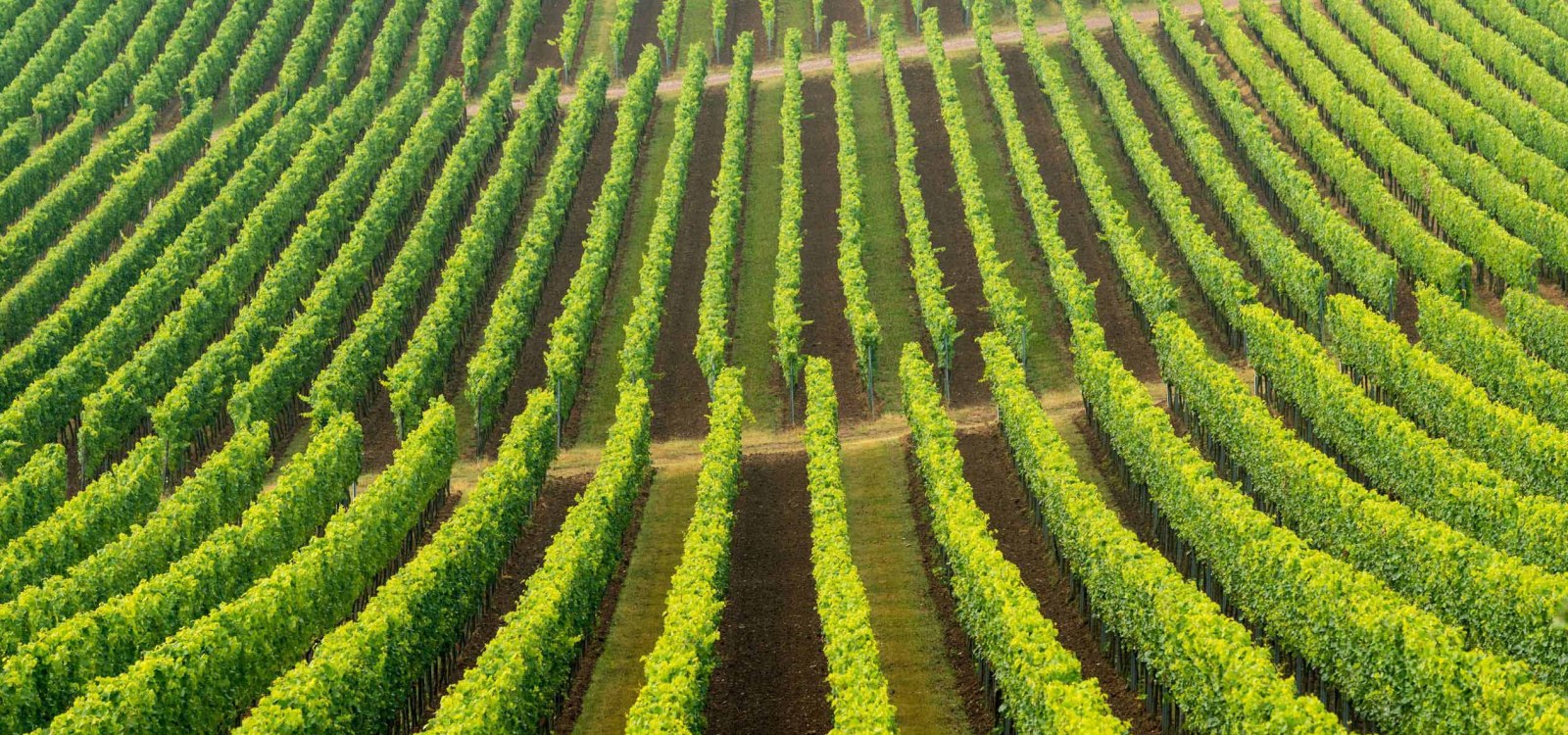
searchMenu



Oh holy Laurentius, give us filigree Rieslings This single vineyard is located directly below the St. Laurenzi Chapel between the villages of Appenheim, Dromersheim or Ockenheim. At the top of the hill is the small village of Laurenziberg and the nationally important pilgrimage church of St. Laurentius, named after a saint. The baroque church was built between 1707 and 1717, on the foundations of an Iro-Scottish chapel from the late 6th or early 7th century. The vines grow on a limestone base, overlaid with clay marl and clayey loess loam.…

Stony, sandy and warm - for red and late-ripening white wines To the left and right of the town: the single vineyard Steinert flanks Gau-Algesheim towards the northern foothills of Westerberg and Ockenheim. The site was first mentioned in a document in 1303 with the name "amme Steynwingarten" and refers to the quality of the soil. The limestone weathered soil with a high sand content warms up quickly. This is ideal for red wines and late-ripening white wine varieties. Hikers can easily discover the vineyard on the Bismarck Tower Hiking Tour.…

The picturesque chapel surrounded by vines It is one of the landmarks of Rheinhessen: the Chapel of the Cross in Gau Bickelheim, surrounded by vines. With its red-tiled roof and warm sandstone walls, it really shines out. The single vineyard is named after the place of worship. The "Oberschultheiss Johann Jakob Hees zu Gau-Böckelheim" donated half of his precious vineyard in 1755 for the construction of the chapel. Various grape varieties grow on clay marl and limestone. Fourteen Stations of the Cross line the path from the village to…

Ring, ring, clang - Let the bells and glasses ring! In any case, we are talking about church bells. The location was first mentioned in a document in 1401 with the name "an dem glockinberge". Supposedly, the name is based on the fact that the yield of the site was to be given to the bell-ringer of the time. The bell-ringer used to be responsible for pulling the bell ropes. Today this is done mechanically. In the single vineyard, you can actually hear the chimes of the surrounding villages - how fitting. The soil here consists of light loess…

The name refers to either a wine cellar, a potato and beet rental in the midst of vineyards or on old settlement remains.

The Lords and Vines of Heppenheim Gau-Heppenheim may not have had a castle, but it certainly had a fortress. An inscription from 1609 in Schlossgasse 4 still reminds of the castle, which was completely destroyed by lightning and fire in 1766. The place was the ancestral seat of the Lords of Heppenheim, called "vom Saal". The name of the site is based on the old castle property of these lords of Heppenheim. The soil, limestone and marl, is deep and rich in water. Many grape varieties feel at home here. Hikers are recommended to follow the 2.3…

Steep up to the crypt, steep site for Riesling vintners A path to the Lord God? Yes! Or at least almost. A steep path winds its way from Gau-Odernheim up to the 246-metre-high Petersberg, on whose spire stood a three-nave basilica with crypt dating from the 10th century. The remains of the crypt, which were found from 1947 onwards, are impressive: this architecture is otherwise only found in central Italy, and for Rheinhessen it is unique. The single vineyard takes its name from the processions that have led to the top of the mountain on…

Of birds of prey and leaning towers Vultures are very large, not too pretty looking scavengers. What does Gau-Weinheim have to do with you? Nothing at all. Because the word "Geyer" stood in the Middle Ages for birds of prey in general. That is, for the hawk or buzzard that lives here. The naming of the location is due to the appearance of these birds. They like to sit attentively on the vineyard stakes - called "stiggel" in Rheinhessen - and lie in wait for prey. Certainly, they also fly around the municipal tower, which is a protected…

Treasure? Value? Appreciation for Riesling and Chardonnay The naming of a field with this name rarely refers to the precious metal gold, but is rather an expression of general appreciation. This is also the case here, in Gensingen. Sand, clay and heavy lime marl characterise this site. There is a calm and warm microclimate, due to the wind shadow at the foot of the Kieselberg. Perfect for Chardonnay and Riesling. > Compare other lagennames with gold, like: Gau-Algesheimer Goldberg or Armsheimer Goldstückchen. .

Of birds of prey and leaning towers Vultures are very large, not too pretty looking scavengers. What does Gau-Weinheim have to do with you? Nothing at all. Because the word "Geyer" stood in the Middle Ages for birds of prey in general. That is, for the hawk or buzzard that lives here. The naming of the location is due to the appearance of these birds. They like to sit attentively on the vineyard stakes - called "stiggel" in Rheinhessen - and lie in wait for prey. Certainly, they also fly around the municipal tower, which is a protected…
Rheinhessenwein e.V.
Otto-Lilienthal-Straße 4
55232 Alzey
E-Mail: info@rheinhessenwein.deRheinhessenwein e.V.
Otto-Lilienthal-Straße 4
55232 Alzey
E-Mail: info@rheinhessenwein.de